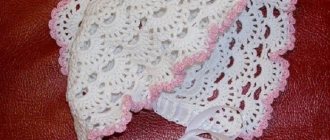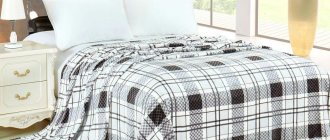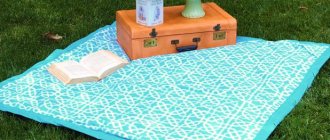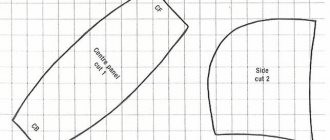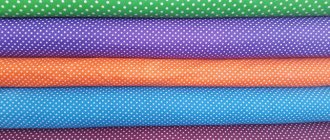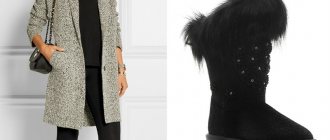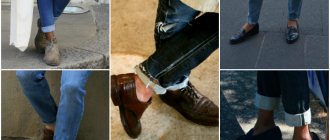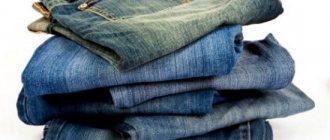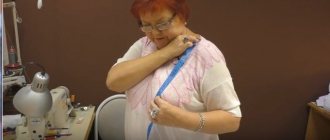The choice of yarn depending on the chosen knitting technique
Experienced craftswomen choose yarn, focusing primarily on the technology for creating a particular model.
Patchwork is a technology for assembling a single fabric from scraps. In the case of knitted blankets, individual related motifs are used, connected to each other. Skilled needlewomen use remnants of thread from past projects.
The motives for the plaid are varied. The entire blanket can be created from threads of one, two or several colors. All the pieces can be the same or completely different - it depends only on the imagination of the master and the desired result.
Both fine and medium-sized yarn are suitable for knitting prefabricated patterns. The main rule when choosing is that all threads must be the same thickness
It is also important to remember that the thicker the thread, the rougher the pattern. Thick thread makes the blanket very heavy and makes sewing the pieces more difficult.
Bavarian knitting is a technique of crocheting a single fabric from air loops. A distinctive feature is knitting small circles without breaking the thread. By combining different colors with each other, you can achieve very interesting and original designs.
For knitting in this technique, it is best to use thin and medium wool threads. And, if you decide to knit a blanket from multi-colored yarns, you need to choose threads of the same thickness.
The Scandinavian method (double-sided jacquard) is a rather complex type of knitting. The peculiarity of this technique is in the drawing. The blanket is knitted from two threads of different colors. As a result, the chosen motif is clearly visible from both the front and back sides.
This technique can be worked using any type of yarn. Alpaca, merino, and angora rabbit wool are excellent. Blankets knitted from plush yarn look very beautiful.
Openwork and lace blankets are valued for their extraordinary beauty of execution and airy structure. Of course, such work requires a lot of effort, because the perfect pattern is created thanks to the endless patience of the craftswoman. But the result certainly pleases both the needlewoman herself and everyone around her.
There are a huge number of patterns for knitting lace motifs indicating the specific yarn for a particular pattern. The thinnest blankets are made from natural materials, synthetic threads or mixed yarns. You can create lace from thin wool, acrylic and viscose.
The thickness of the yarn may vary depending on the chosen blanket model
Here it is important to take into account one single rule: the tighter the thread is twisted, the clearer the pattern will be. Down lace is a completely different type of openwork; the motif of the design is not clearly visible, but can only be guessed on the canvas, covered with a continuous veil of down.
How to knit a blanket
Plush yarn is easy to knit - all the patterns are very simple . The thread does not allow you to knit an openwork fabric: more precisely, it does not look the way it should. Blankets consist of the most ordinary loops, so even a beginner can make a plush blanket:
- Step 1 . Cast on a chain of air loops equal to the width of the future product.
- Step 2 . Knit according to the indicated pattern or video tutorial directly to the desired size - be it square or rectangular.
Knitting patterns: which pattern to choose?
Knitting with plush yarn is quite easy - almost all of the available patterns are simple and straightforward. This is explained by the fact that most threads are not suitable for openwork knitting (complex patterns do not hold the pattern well). Therefore, this option is ideal for those who are just beginning to comprehend the art of knitting.
The most popular schemes and patterns:
"Zigzag". It is distinguished by alternating colors between rows. Typically two or three colors are used. Another name is “Wave”;
"Grandmother's Square" The most popular pattern. Allows you to produce warm, dense and at the same time quite light things;
“Columns” or “bumps”. A pattern based on regular stitches (double and single crochets). Ideal for beginners;
Expert opinion Maria Vasilievna Mikhailova Manager of a furniture store. Knows everything about comfort and interior design
"Tick marks." A pattern similar in technique to the “granny square”, which allows for a lower density than, for example, when using “columns”.
Knitting is a leisurely process, akin to meditation. Therefore, if it happens that you have free time and it is not clear what to do with it, you can try to “meditate” on a blanket or plush rug. There will definitely be more benefits!
Crochet a blanket
To knit a plush blanket with your own hands, after selecting the yarn and counting its quantity, you need to select a hook.
Hook selection
In order to select a hook, you can use three methods. The first is to follow the thread manufacturer's recommendations. To do this, carefully examine the label; the hook sizes are most often indicated there.
Expert opinion
Mikhailova Maria Vasilievna
Furniture store manager. Knows everything about comfort and interior design
Another way to select a hook is to sample a few and try a test pattern. This way you can easily determine whether the option specified by the manufacturer is suitable or not.
The last way is to fold the thread in half and look at what you get. For comfortable knitting, the thread should be thicker than the hook head. This method is best used when you have experience, so as not to make mistakes in the store.
Pattern selection
To make a gift for your baby look beautiful, you need to take a responsible approach to choosing a design. The blanket can be knitted using ready-made samples, descriptions of which can be easily found on the Internet.
Another option is to use a diagram. For example, knitting with cones is considered the most popular and easiest to learn for beginners. In addition, such a blanket will look good in a crib or stroller.
To do this, tie several light loops of the required length. After the fifth, you need to insert the hook into the sixth loop and grab the thread you are using. The result will be a column that needs to be thrown over. To do this, we place a loop in the same place and pull it through the post. The bump will be created after the working thread has been passed through all the loops.
Then we make a connecting loop and start again. The bumps can be arranged in a checkerboard pattern - this will give the blanket a finished look.
Children's models
Children's blanket models are most often selected taking into account a number of conditions. If this is a blanket for a crib, then you need to calculate its size. For example, a blanket up to 150 centimeters long is suitable for a small child. For such a blanket, it is better to choose neutral pastel colors or colors of the children's room.
Another option for a blanket for a newborn is a small blanket for swaddling him. It is best to knit a small square because this shape is best for wrapping your baby in winter.
A crocheted baby blanket can be made to be used while walking outside. Such a product should be slightly smaller than a stroller, but still larger than a diaper. Properly selected tones should be harmoniously combined with the color of the stroller. The optimal size is 75 by 75 centimeters.
How to choose thick threads
There are recommendations for choosing threads for each way of creating things.
For knitting needles:
- uniform thickness over the entire surface;
- the diameter is 1-2 sizes smaller than the number of the knitting needle (otherwise the thread will rub against the surface, which will damage its density and integrity);
- relatively flat surface. The more roughness, the more inconvenience in the process of making things with knitting needles.
For the hook:
- uniform differences in thickness along the entire length (then you can create even loops), or their absence;
- perfect match of thread diameter with hook size. Otherwise, it will be inconvenient to grab the loops;
- It is allowed to purchase yarn with a rough or piled surface - they do not interfere when working with a hook.
If fine motor skills are well developed and skill is honed, then you can work with any bulky yarn with your hands, regardless of the type
Attention is paid only to raw materials. Some people have hand skin that is sensitive to synthetic fibers, so you will need to choose only natural yarn
Otherwise, irritation or allergies will occur.
Advantages and disadvantages
Holding the coziest blanket in your hands, it’s difficult to objectively assess its shortcomings, but they exist. Of course, polyester is to blame for this; after all, the composition of minky plush is its main disadvantage.
Like any synthetic, even the highest quality, minky:
- electrified;
- absorbs odors;
- may cause contact dermatitis in sensitive people;
- creates the effect of a thermos.
You can learn to live with the shortcomings, especially if the advantages outweigh: the minky plush is so light, durable, and wonderful that once you hold it in your hands, you don’t want to give it up.
Calculation of yarn consumption
Calculating yarn consumption is an important step, especially for a young mother who does not want to have enough material left over for a couple of carpets after knitting, and tries not to burden her already meager budget with additional expenses. On the other hand, you need the blanket to be the desired size, and not like a small rug that is only suitable for an Instagram photo.
Expert opinion Maria Vasilievna Mikhailova Manager of a furniture store. Knows everything about comfort and interior design
Did you know that many bloggers do not use a ready-made blanket for beautiful photographs, but only a small piece that looks beautiful in the frame but does not take up much space in the studio?
To avoid this, you need to calculate how much material will be used for the blanket. To do this, we need to decide whether we will measure the size or calculate the final weight of the product.
The weight of the threads needed for the finished blanket is best calculated using the formula. First, knit a workpiece from a certain number of threads, calculate its area.
Then measure the weight of the sample. Multiply the resulting number by the area of the future blanket.
Later, use a calculator to divide by the area of the sample. This will give you the number you need.
Afterwards it will be possible to calculate the number of rolls that will need to be purchased in the store.
Another calculation method you can use is to find out how many meters of thread you need to use. To do this, take the area of the blanket and multiply it by the length of the thread that was used to make the sample.
After this, divide the resulting number by the area of the sample. Don't forget to add another meter to the result, this is a reserve for loops.
It is more convenient to know the number of threads in meters if the local store sells yarn only in bobbins, which indicate length rather than weight.
Another option is to look at the amount of yarn in a magazine or in a special table. They can be found on the Internet or in the instructions for which you will knit.
This method will not allow you to make mistakes, and there will be exactly as much yarn as needed. All that remains is to find a beautiful source in a magazine or newspaper, from which you can make a warm blanket for a small child.
We prepare materials and tools.
Basic materials for the blanket:
- quality cotton;
- plush.
When sewing a winter blanket, you will need padding polyester.
Materials for double-sided thin or insulated blanket
Materials can be purchased in a store or ordered on a trusted online site.
Tools you will need to make a blanket:
- a piece of soap or a pencil for marking;
- sewing machine, threads;
- scissors, meter tape.
How to make a plush blanket
Plush threads are different from other types of knitting threads. As a rule, it is made from hypoallergenic materials: micropolyester, wool, bamboo, viscose. The material has special properties: volume and fluffiness. The pile of the plush yarn is about 0.5 centimeters long, so it looks quite thick and tousled. On the contrary, products made from it are light and delicate.
Due to its volume, the material practically does not conduct heat, which is why it is cool in hot weather and warm in cold weather. It is precisely because of this property: to maintain a microclimate around the human body, knitted blankets and plush clothing are suitable for newborns.
Keep in mind that plush yarn is very delicate: if the knitting is too tight, it may become deformed during use.
At the same time, the threads are very flexible and fit well. Loops made from them do not deform or stretch. In addition, the loops turn out to be very large - about 2 cm in height and width. This means you can knit the product very quickly.
To check how the plush yarn will behave in the finished product, knit a small sample measuring 15x15 cm.
Thanks to this, knitting a plush blanket is very simple. Moreover, the knitting tool can be anything:
- Spokes
- Hook
- Own fingers
Typically, knitting plush is sold with a row of stitches already cast on. It is easier to work with your hands or for novice craftswomen. Yarn without cast-on loops is also sold separately.
Products made from plush knitting yarn are amazingly soft and pleasant to the touch.
Crochet blanket made of plush yarn: diagram, description, video tutorial
Plush yarn blanket set
Plush yarn has only recently appeared on the market. Amazingly, in a short period of time she managed to gather thousands of needlewomen fans around the world.
Everything is knitted from plush yarn - toys, interior elements, clothes. A separate article is devoted to ideas for products made from plush yarn.
Today we’ll focus on one of them - let’s talk about crochet blankets made from plush yarn.
Instructions for weaving a blanket yourself
During the knitting process, the loops of the working thread are threaded into the loops of the last knitted row of the product
It's better to start with a small product. Kids really like the fluffy blanket: it is light, warm, easy to wash and dries quickly. The production of plush fabric is carried out in the following sequence:
- Lay the yarn out on a flat surface and count off 50 stitches. The working thread is placed on top. Weaving is done from the bottom up; the fabric is not turned over during the process.
- Braided fabric is most suitable for a blanket - with this method of connecting loops, there will be no large holes in the product. The first two loops are crossed, the last one remains on top. There is no need to adjust the tension; the threads are laid quite evenly.
- The free edge of the yarn is pulled through the bottom loop, the next piece of thread is pulled through the top. As a result, a dense cross weave is formed. Work continues according to the proposed scheme.
- Having reached the edge of the measured thread, they begin to cross the yarn in the opposite direction. In this case, the loops are threaded in reverse: first the thread is pulled through the top and then through the bottom loop. Thus, the first row is knitted as the third, the second as the fourth, and so on.
- When the working thread runs out, cut the loop with scissors, and do the same with the beginning of the next skein. Tie the yarn with a small strong knot, carefully trimming the edges. While working, tuck the knot inside so that it is invisible. Some craftswomen sew the edges of the yarn with matching threads.
- Having finished the work, close the loops of the last row, pulling the working thread through each one. You will get a tight, neat braid.
- To make the product perfectly smooth and beautiful, tie the edges with a border. The work is done with a thick hook, the loops on the yarn are pre-cut. Another processing option is to tie the blanket with an uncut thread with loops facing outward. You will get an original fringe that greatly decorates the product. A knitted blanket with a contrasting trim also looks elegant.
Video: sample of a simple pattern
The fluffy plush blanket does not need to be steamed; just wash it in warm water and dry it on a horizontal surface. The product is fluffy, soft, durable, and very pleasant to use.
Choosing yarn for a blanket
Stores provide a wide range of yarn from which you can knit bedspreads and blankets for newborn children. These can come in a variety of threads, from cotton to wool, but the first step is to become familiar with what each option is.
First you need to look at what is written on the label of the skein of thread. Most often you can see the name of the yarn, for example, “Hand Knitting Yarn” or “Velor Yarn”. Next, the manufacturer indicates the composition of the thread, for example, 80% bamboo / 20% wool. This allows you to understand what properties the finished product will have.
For example, for light summer clothes that are needed for walking with a baby outside, cotton yarn, flax fiber and silk threads are perfect. In winter, things made from satin, flannel, flannel or calico will keep your baby warm.
A universal material that is suitable for any season and weather is plush, also known as velor. A newborn baby will feel great, because this material is delicate and soft, and in addition, the special properties of the threads make it hypoallergenic.
In addition, plush comes in different colors, which means that you can create a blanket that will suit any interior.
Also on the label they write which crochet hook is best to use and indicate the size of the knitting needles. These recommendations do not have to be followed if you already know how to knit, but beginners should take them into account. At the very end, on the label they write under what conditions the finished item should be washed.
The next important point when choosing is the thickness of the thread, which is usually indicated on the label as a ratio, for example, “120 m / 100 g”. The numbers mean that one hundred grams contains 120 meters of thread. The lower this indicator, the thicker the yarn will be, and accordingly, if you need a thin thread, then choose an indicator of more than 300 m / 100 g.
Thick yarn is suitable for warm winter clothes, and thin yarn will protect from light winds in autumn and summer.
Also, when choosing, you need to see if the thread twists. To do this, unwind a long piece and fold it in half. If it gets twisted, put it back - this skein is suitable for machine knitting. Handmade fibers have a low twist factor.
Knitting a turban hat for beginners
Beauty is a deadly force. This was proven by singer Kylie Minogue, a beauty queen. She completed her look in a brown coat with a cute turban hat, which she later admitted she made herself from a simple knitted scarf. After such a tremendous success of the turban, craftsmen from all over the world hastened to add their own twist to this headdress.
Knitted turban
The sequence of steps in the work is simple, but requires some preparation.
- We measure the dimensions of the head, write them down (or remember them).
- We knit the fabric according to the received numbers.
- We wrap the resulting fabric around the head and sew it together.
Do-it-yourself voluminous hat made of yarn
A voluminous hat is a modern headdress. Little tricks will help you create a work of art.
- To make the hat as warm and voluminous as possible, you need to take thick yarn (or fluffy). You can also make your own fabric from 2-3 layers of regular thread. You need to knit with thick plastic or wooden knitting needles.
- The elastic band of the hat or its edge should be knitted with smaller diameter knitting needles. If we initially knitted with sixth needles, we need to take fourth ones to the edge.
- For a large hat you need textured and bright patterns: cones;
- braid (or tourniquet);
- English gum.
Plaid from Alize puffy calculations, quantity, pattern description.
Alize Puffy yarn consists of loops for hand knitting, without using a hook or knitting needles.
Characteristics of Alize Puffy yarn
- The weight of one skein of Alize Puffy is 100 g.
- Alize Puffy thread length is 9 meters.
- The Alize Puffy package contains 5 skeins, enough for one blanket for a newborn.
Caring for Alize Puffy blankets with the Braided pattern and more is very simple - hand wash at a temperature of no more than 30 degrees. Hand press only, gentle. Drying a blanket from Alize Puffy Braided on a horizontal surface. You can't iron. If you follow all the recommendations, the Alize Puffy Braided blanket will retain its appearance and functionality for a long time.
Many people ask the question, how many skeins of yarn will Alize Puffy need to knit a Braided blanket 100*100 cm? Or 150*200 cm? Or maybe even 220*220 cm?
The answer is quite simple, there is a certain formula for calculating Alize Puffy yarn for a Braided blanket:
- One square meter of Braided blanket contains 7.25 skeins of Alize Puffy yarn.
- Knowing the length, width and constant number, you can easily calculate how many skeins of Alize Puffy we need.
Here are some ready-made calculations:
Example 1 for calculating yarn for a blanket from Alize Puffy Braid
We want to knit a Braided blanket from Alize Puffy with a length of 120 cm and a width of 100 cm, what we get: We convert our dimensions into meters, respectively, we get 1 meter length and 1.2 meters width.
We calculate: 1*1.2*7.25=8.7 (skein) We will need 8.7 skeins for a braided blanket measuring 100*120 cm, because We cannot buy exactly 8.7 skeins, so we round to the nearest whole number and get the number 9, respectively, 9 skeins will be needed for a Braided blanket 100*120 cm.
Example 2 for calculating yarn for a blanket from Alize Puffy Braid
We want to knit a Braided blanket from Alize Puffy with a length of 220 cm and a width of 220 cm, what we get: We convert our dimensions into meters, respectively, we get 2.2 meters long and 2.2 meters wide.
We calculate: 2.2*2.2*7.25=35.09 (skein)
We will need 35.09 skeins for a braided blanket measuring 220*220 cm, because We cannot buy exactly 35.09 skeins, we round up to the nearest whole number and get the number 36, respectively, 36 skeins will be needed for a blanket 220*220 cm. The remaining thread can be used for fringe around the Braided blanket.
Calculation of loops for a blanket Braided from Alize Puffy yarn
Catch an approximate calculation of the number of loops for knitting a blanket from Alize Puffy (the “Braided” pattern), you can cast on one more or less stitch (an even or odd number), for the symmetry of the Braided pattern (I think a difference of 2 - 3 cm is not so bad) .
According to our calculations: 1 pet. = 1.7 cm10 pets. = 17 cm, but Alize Puffy’s yarn comes in different thicknesses, so I recommend that you first knit a sample of 10 loops and calculate it yourself! For a Braided Alize Puffy blanket 200 cm wide, you need to cast on 118-120 loops.
Description of the pattern Braided blanket
The Braided pattern is the most popular for knitting blankets from Alize Puffy. That is why we decided to tell you more about it. The size of the blanket with the Braided pattern is 85*85 cm.
- Count 50 stitches from Alize Puffy yarn. Cross the 49th and 50th loops, the 51st and 52nd loops coming from the skein, pass through the crossed loops, bringing them to the front side of the braided pattern.
- Thus, cross all the stitches in pairs. Alize Puffy and knit them with the stitches coming from the skein, in the same direction. In the next rows, do not turn the work around. Knit from left to right and right to left.
- In the 2nd row, first st. do not knit, 2nd and 3rd pet. cross each other in the opposite direction to the direction of crossing the loops of the previous row. In this way, cross stitches in pairs, moving from left to right to the end of the 2nd row.
- Last pet. don't knit. In the 3rd row, 2nd stitch. cross with unknitted st. the previous rad - also in the opposite direction. This creates a braided pattern. Knit a blanket using the Braid pattern from Alize Puffy in height using the required number of stitches.
Caring for and washing a blanket
Plush is made of polyester, so washing is not a hassle. But there are still a few recommendations that need to be followed:
If there is a triangle with slanted lines on the label, then exposure of clothing to chlorine is prohibited; a crossed line prohibits any type of bleaching
Drying outside is not recommended
Washing is possible at a water temperature of 30 degrees
Crossed out curled underwear indicates that the clothing cannot be subjected to mechanical impact.
You should cut the plush carefully, as slight shedding may occur: some pieces of fabric may move away from the main one. But this will not affect the main part of the fabric.
Choosing yarn for knitting a merino blanket: tips for beginners
Bulky thick merino yarn is the main thing you need for work. It is worth noting that the material consumption is high. Depending on the desired size of the product, you may need up to 5 kg of thread. Yarn is sold in kilograms. The price depends on the size and thickness of the thread. For example, natural merino yarn with a diameter of 3 cm costs up to $100 per kg. A blanket can take 3-4 kg. The thicker the diameter, the higher the price, which of course also depends on the composition. If it is 100% wool, then it will not cost less than $80 per kg. It is more profitable to buy on American and Chinese sites, especially from manufacturers. The price per kg can be $60-70 per kg, but plus you need to pay for delivery.
A budget alternative is to buy merino yarn with the addition of acrylic or all acrylic threads. Acrylic is a synthetic material that is widely used for hats and scarves, especially those made in China. The material is cheap, looks a little different from merino, less smooth and warm, but costs $20-30 per kg. There are threads of different compositions, where 50/50 merino and acrylic, 30/70 or 100% acrylic. The main advantage of acrylic threads is practicality. An acrylic blanket can be washed, but the thread will fray over time.
Why plush and cotton?
Minky plush is microfiber. Soft, gentle, fits pleasantly on the body. Warm and breathable, your baby will stay warm without sweating.
Made from 100% polyester. Many people consider this to be a guarantee of poor quality. Modern technologies are constantly developing, so synthetic material is no worse than natural material, and in some ways even better. There is no unpleasant odor, and it does not absorb environmental odors.
The material is very dense, so it will be difficult to tear or wipe. It also does not wrinkle and easily tolerates stains. You can wash it at least every week, and it will not lose its rich colors, its softness and tenderness.
High-quality plush - American made. But material from European, Chinese and Korean factories will do.
Cotton is natural, hypoallergenic. Excellent air permeability, allowing the skin to breathe. Absorbs 20% moisture while remaining dry. A variety of colors and prints give you the choice to suit your taste.
Producers of high-quality cotton are American, Korean, and Polish factories. European and Chinese cotton is also suitable.
Pattern selection
The “Rice” pattern is a very simple pattern obtained by alternating knit and purl stitches, also perfect for plush
Knitting even a small blanket is quite a labor-intensive task, so it is better to choose a simple pattern. Traditionally, it is customary to choose sectional patterns for children's clothes.
The “Grain” pattern is a sectional one and is easy to knit according to the pattern
Knitting pattern for a blanket for a newborn “Garf Stitch”
Striped plaid knitted in garter stitch
For example, waffle. To knit a baby plush blanket with this pattern, you will need about 720 meters of yarn (about 6 skeins).
The simplest plush blanket knitted
Waffle pattern diagram
A simple waffle pattern is good for knitting children's items, as the fabric is soft due to its uniform thickness
We cast on the number of loops that are a multiple of 10. Then we follow the diagram.
1 row. Remove the first loop, *knit 4, purl 1 with the thread left on the outside of the work - that is, purl “in reverse”*
We carry out the pattern in *…* to the end of the row and finish with an edge purl.
2nd row. Remove the edge loop and purl the entire row.
3rd row. We knit in the same way as row 1.
4 row. Repeat row 2.
5 row. Repeat row 1.
6th row. Remove the edge stitch, *knit 4, purl 1*, edge stitch.
We repeat these 6 rows to the length we need.
Crochet waffle pattern for a cozy and light blanket
Keep in mind that plush yarn is very delicate: if the knitting is too tight, it may become deformed during use.
Children's knitted plush blanket “Waffle”
Unusual plush blanket with a bunny, made with a waffle pattern
In order to check how the plush yarn will behave in the finished product, knit a small sample measuring 15x15 cm. This will help you determine both the size of the knitting needles and the tension of the thread while knitting.
Double-sided “cage” pattern of knit and purl loops with a relief texture
Benefits of plush yarn
Among other types of yarn, this one stands out with an impressive number of advantages, which include:
- Huge color palette to choose from. The ability to choose bright shades will especially delight children;
- strength. The fabric made from this yarn is strong and at the same time very soft and pleasant to the touch;
- ease. The low weight of the products is a definite plus;
- ease of care. Items made from this material can withstand washing and brushing very well. They do not stretch or shrink;
- the ability to use not only for knitting clothes, but also other items. For example, rugs, car covers, house slippers, toys and decorations;
- ideal for small children. It does not cause irritation due to the absence of wool in the composition.
For handicraft lovers, this yarn will become indispensable. Every family member will appreciate its versatility. Warm slippers, envelopes for newborns, blankets and even car seat covers are made special from it. The large pattern that results is very unusual and stylish. A toy made from this thread will be velvety and soft, it will be a wonderful gift for a child.
What can you sew from minky plush?
The material is very modern and practical; many useful things are made from it:
- decorative pillows, pillowcases for regular pillows;
Minki plush and cotton polka dot pillow toys - blanket for babies and adults;
Reversible Minky Plush Blanket - light summer blanket;
Thin blanket with ears made of soft plush and cotton
- envelope for discharge from the maternity hospital;
Unusual envelope for discharge with your own hands - warm pajamas, dressing gowns, other home clothes;
Soft plush baby onesie Minky - fluffy toys;
Soft plush toy Minky “Whale” - hats, scarves, mittens for babies;
Children's set of soft plush in turquoise and gray colors - rugs for children to have fun playing on.
Features of loop yarn
The thread in this yarn is soft, light, with a plush effect. Alize Puffy has comfortable wide loops, approximately 2-2.5 cm. The fleecy structure does not allow the loops to unravel arbitrarily. Although, if you need to unravel a certain number of loops, then with a slight tension on the thread, the knitting unravels in the most ordinary way.
This pleasant-to-touch thread is used for knitting children's blankets, toys, hats, pillows, blankets, scarves, and booties. This yarn can be knitted with knit and purl stitches, and can be formed into a pattern with crossed stitches and arans.
The yarn is produced in plain, light and rich dark shades. The color does not fade. Products made from this yarn can be washed at temperatures up to 40ºС. It is recommended to dry them flat.
Which yarn is best to buy?
In addition to Alize Puffy made in Turkey, there is a similar Koala Baby yarn also from Turkey. It is made of 100% polyester, soft and fluffy, but less dense than Alize. The product made from it is loose, lighter and airier. In the thread you can see the base on which the pile is wound. This yarn is good for summer products where high density is not needed.
Koala Baby yarn is available in 3 skeins per package. The weight of one skein is 180 g, which is 16.7 m. One package is enough for a small rug or children's blanket measuring 90x90 cm. Threads can be plain or multi-colored. There are no other analogues, since this type of yarn with loops for hand knitting is patented and is the know-how of Alize.
Advantages and disadvantages of hand knitting
Among the obvious advantages of this type of needlework, what stands out is that it does not require knitting needles or a hook. It is not so often possible to find knitting needles No. 12-15 or a hook of this diameter on sale. This does not mean that Alize Puffy cannot be knitted using tools. To do this, you need to pull out not the thread from the ball, but the finished loop right away.
Advantages:
- simple technique suitable for beginners and young knitters;
- quick results thanks to large loops and thick thread;
- you can take the work with you without fear of losing or breaking the tool;
- the method is suitable for knitting things with a large number of loops;
- finished products are pleasant to the touch, do not cause allergies, are warm and fluffy.
Flaws:
- when knitting, you need to control the thread from the ball so that all the loops “look” in one direction and do not twist;
- it is inconvenient to carry out work on weight;
- The thread sometimes becomes thinner, which looks like a worn area in the product.
Scheme
As we found out, you can use any simple pattern to crochet a plush blanket. Below we look at the most popular options.
Option 1. Zigzag pattern
Another name for the pattern is “Wave”. Each row is knitted in a new color. You can alternate threads of two, three, four - any number of shades. A blanket knitted with this pattern has a beautiful wavy edge.
Children's blanket with Zigzag pattern made of plush yarn
Option 2. Pattern “Granny Square”
The famous “Granny Square”, which can be used to knit literally anything, takes on a new life in combination with plush yarn. It turns out to be an excellent blanket: warm, but not so heavy and dense.
Plush blanket with Granny Square pattern
Option 3. Columns
We are talking about ordinary loops - double crochets and single crochets. Moreover, double crochets are used much more often. Do not think that the simplicity of the pattern will spoil the product - in this case it will only decorate it.
Scheme of the "Double crochet" pattern
Single crochet pattern pattern
Option 4. “Tick” pattern
A pattern somewhat reminiscent of “Granny Square”. The result is a slightly less dense plush blanket than when knitting with stitches.
Scheme of the “Checkmarks” pattern with checkmarks positioned one above the other
Unusual ideas for knitting from knitted yarn
Many people know how to crochet and knit. But it can take several days to produce even one item. But there is a way out. Get acquainted with a convenient and very pleasant knitting material - knitted yarn. Knitting with it is a pleasure, because it is very fast. You can use very thick knitting needles or a crochet hook. Or you can get used to it and knit directly with your hands.
The canvas is created very quickly, so you can aim for large-sized products.
If you master the hand knitting technique, you will not need additional equipment. And the mating will be the largest.
There are many items that can be made from knitting yarn. For example, comfortable slippers. They fit comfortably on the foot, are pleasant to the touch and very light. In winter, your feet need to be kept warm!
Knit a fashionable bag, clutch or even a backpack. The accessory will fit perfectly into the wardrobe of a creative and extraordinary person. The main thing is not to skimp on high-quality accessories, and then your product will look not like a homemade product, but like a designer item.
For a beach bag, yarn would be an ideal option. After all, it will not fade from the bright sun and will dry quickly if it suddenly gets wet.
Wearing a backpack is not only fashionable, but also very good for your posture. After all, the load is distributed equally on both shoulders.
If you need to knit something very quickly, opt for some decoration. These could be bracelets, earrings or hair jewelry. The most extravagant girls can recommend knitted necklaces.
Knitted baskets and boxes will be an excellent decoration for the interior. They can be either very large or very small. Baskets can become a home for pets and even a cradle for a baby.
If you add a wicker lid to the basket, you will get a comfortable ottoman with storage compartment.
You can even create a vase. True, you can only put dried flowers or artificial flowers in it.
Young mothers will appreciate this idea. The cradle will be soft and very light.
With these baskets, cleaning the nursery will turn into a fun game. And parents won't have to force their children to collect toys.
Decorate the basket with rhinestones, ribbons and lace, and it will look very elegant.
The spike technique looks great on a basket of multi-colored threads.
It is difficult to determine exactly whether they are baskets or toys.
The combination of white and pink evokes associations with some sweet delicacy.
This basket can be used as a pen stand.
The more stands, the more small items you can store in an orderly manner.
Indispensable things for a children's room.
You can even knit interior items from knitted yarn. For example, ottomans of different sizes and shapes.
Additional seating can be obtained in case of sudden arrival of guests.
And the classic option is a thread rug. You can choose any pattern and size.
To summarize the above
It would be a stretch to call such knitting difficult. At the same time, the resulting plush products, be it a blanket or even a simple scarf, come out very warm and, probably, cozy. You can't even say it any other way. It feels like you are falling into a soft and familiar embrace. A huge plus is the ability to unravel the finished product and knit something new. Considering that the cost of a blanket knitted with your own hands without a hook and knitting needles will be two (or even more) times cheaper than purchasing a new one, many will probably no longer have doubts about the answer to the question of whether it is worth knitting on their own.
The Homius editors invite home craftsmen and craftsmen to become co-authors of the “Stories” section. Useful first-person stories will be published on the pages of our online magazine.
Previous #BetterHome#BetterHome Creative ideas for the interior from ordinary cement Next #BetterHome#BetterHome Summer is coming: how to make shade roller blinds for your window
Video tutorial
Open sources contain many original video tutorials on knitting plush blankets, but very few on crocheting. But we found for you high-quality and beautiful material from one of the needlewomen. The result is a simple, but more embossed plush blanket. The explanation is extremely simple.
Crocheted plush yarn blanket
Each of the proposed options is good in its own way. But it will be even better if you come up with something of your own by combining these ideas. Knitting is about creativity and its inherent originality. Who knows, maybe your option will be more than worthy and gain popularity?
